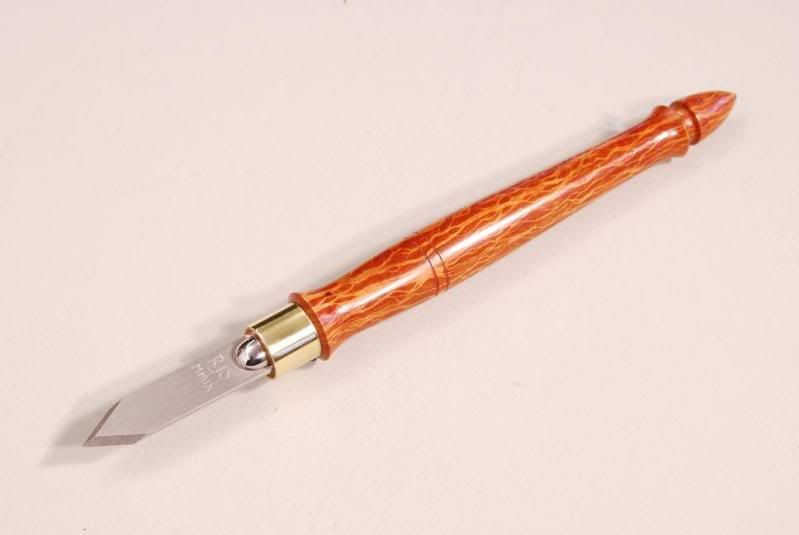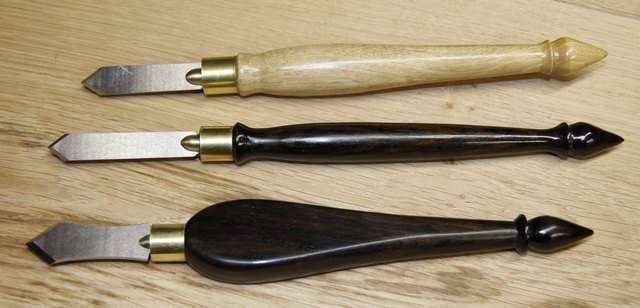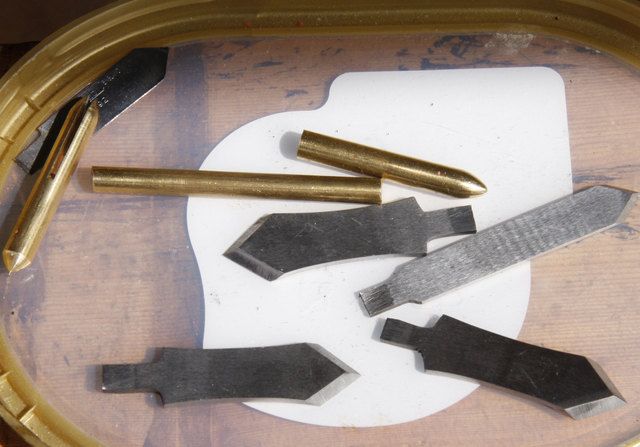Having just had a play with a newly bought Japanese marking knife in the form of a piece of 3.5mm thick x 15 wide flat steel strip with two single bevel edges ground at 45deg on the same side and a flat back format - I've discovered that they need some care in use.
It's similar to the 'spear point' type here: http://japanwoodworker.com/product.asp? ... t_id=13220
I've no significant experience with marking knives, having so far used either pencils or occasionally a craft knife. Can anybody advise whether or not there are recognised right and wrong ways to use them? Hints and tips? Is there a write up anywhere?
It's easy enough to mark a line along a metal straight edge, but it's very easy to trim a sliver off a wooden edge, or for that matter to allow the grain to draw the knife away from the guide. It's on the other hand not all that easy to hold the flat back flush against the side face of the guide.
This type seemed a reasonable choice in that the fairly steep double bevel as on a craft knife is very easily levered away from the guide. (by tipping the blade) Something like the type of pocket knife blade that has a straight cutting edge, with the back edge curved down to the point and a bevel running for the full width of both sides of the blade seems like it might be a good idea, but maybe there are subtle issues there too????
It's similar to the 'spear point' type here: http://japanwoodworker.com/product.asp? ... t_id=13220
I've no significant experience with marking knives, having so far used either pencils or occasionally a craft knife. Can anybody advise whether or not there are recognised right and wrong ways to use them? Hints and tips? Is there a write up anywhere?
It's easy enough to mark a line along a metal straight edge, but it's very easy to trim a sliver off a wooden edge, or for that matter to allow the grain to draw the knife away from the guide. It's on the other hand not all that easy to hold the flat back flush against the side face of the guide.
This type seemed a reasonable choice in that the fairly steep double bevel as on a craft knife is very easily levered away from the guide. (by tipping the blade) Something like the type of pocket knife blade that has a straight cutting edge, with the back edge curved down to the point and a bevel running for the full width of both sides of the blade seems like it might be a good idea, but maybe there are subtle issues there too????







